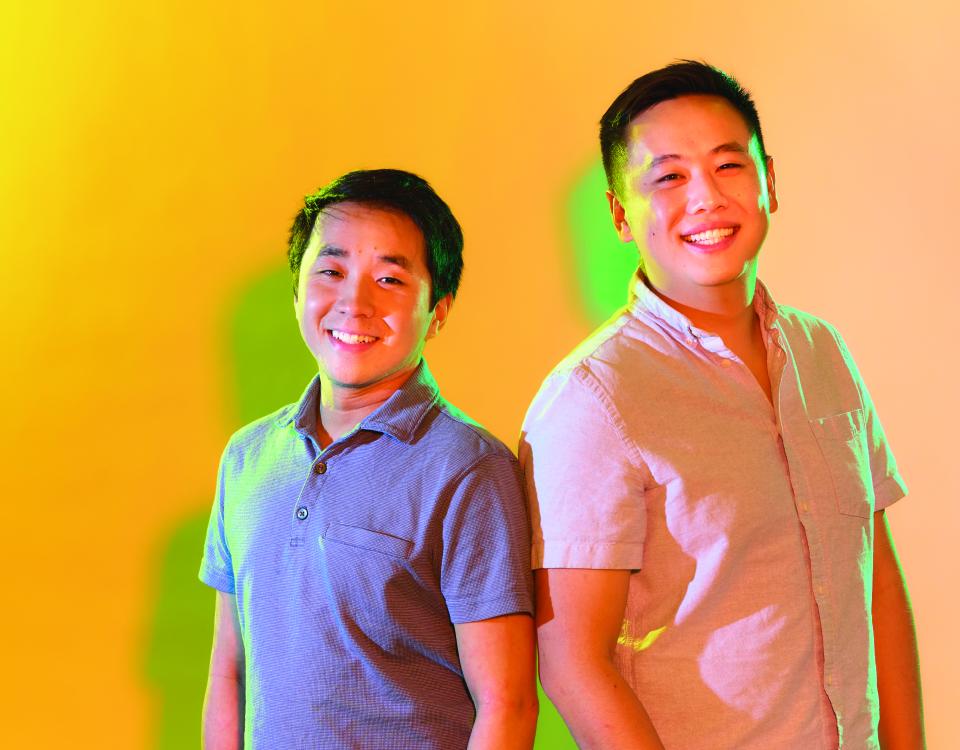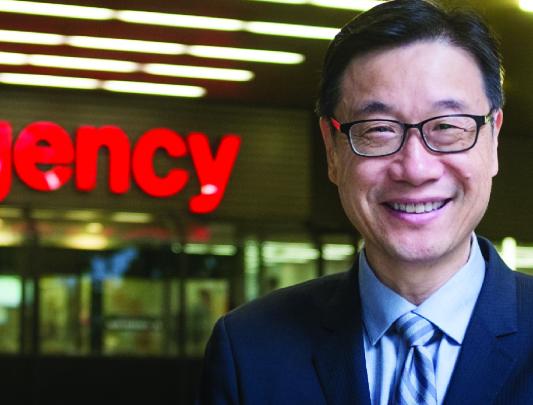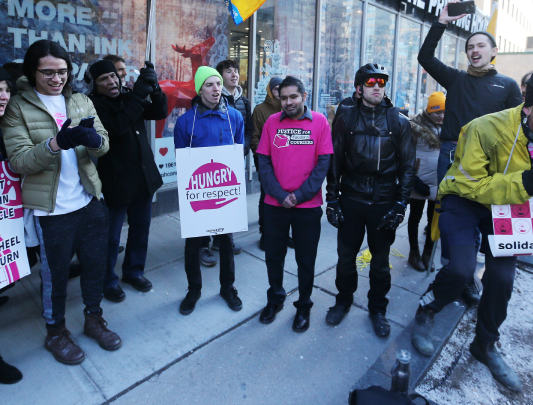
Kookai Chaimahawong is on the move. Photography by Iris Chia.
Generation flex
Young workers are nimble, connected, and redefining employment relationships on their terms.
“I left the job, but my network stays with me.”
Kookai Chaimahawong is on the move. Yesterday she was working her dream job at a venture capital firm. Today she’s creating a workplace of her own, searching for a new way for investors to connect with innovative start ups. “I realized it’s time to create,” she says. “I want to come up with something that is more friendly to the founders of the companies I'm investing in, supporting them more than just providing capital.”
Chaimahawong is betting on the network she’s cultivated over her past few jobs to help her discover her path, a luxury afforded by an explosive growth in global connectivity over the previous decade. While she straddles the grey area between Millennials and Generation Z – workers less than a decade into their careers – Chaimahawong is part of the movement skewing workforce demographics in radically new directions of connectivity, entrepreneurship, and social conscience – fuelling a sea change in how we see today’s workplace.
Resigned to change
Generation Z – born roughly between 1997 and 2010 – follow the Millennials, who followed Generation X, who followed the Baby Boomers. Each generation flows gradually into the next, and each generation’s vision of the workplace is an evolved version of the one they inherit.
But this new generation is something of a special case. The changing workplace has been kicked into overdrive by the rapid growth of digital technology, the advent of the gig economy, and the recent mingling of personal and corporate values.
The way the pandemic brought these other elements together to normalize the work-from-home option is the kind of sudden, drastic reshaping of the workplace rarely seen twice in a lifetime. Many workers simply do not want to return to a 9-to-5 grind, having seen the possibilities unlocked by a more flexible work-life balance.
“Right now we are experiencing what a lot of people are calling the Great Resignation, which is the kind of mass exodus of employees from organizations over the past year,” says Rebecca Paluch, assistant professor at the Sauder School of Business. “Organizations are really having a hard time bringing people back into the workforce. They’re rolling out new kinds of incentives to get people to come back to work.”
Hustle and flow
While some, like Chaimahawong, are taking the big leap to self-employment, a much larger group is finding ways to keep some semblance of employment – either part-time or flexible hours – while exploring side hustles like blogging, vlogging, selling crafts on Etsy, or creating niche businesses using ubiquitous, low-cost innovation platforms.
“The gig economy gets kind of a bad rap sometimes, and rightfully so for promising worker power where it isn't necessarily,” says Paluch. “But it also opens up opportunities for people to pursue entrepreneurial ventures that wouldn't have been financially supportive in the past.”
As little as 10 to 15 years ago, freelancing or job-hopping was a sign of instability. Today it’s the norm, and in some places an advantage. Reid Hoffman, the co-founder of LinkedIn, calls such gigs “tours of duty” – short-term contracts that help employers and employees squeeze as much out of each other as they can and then split up.
The speed of change
Until the 1980s, the workplace centred around loyalty. You were loyal to a company for your career, and you’d walk away with a gold watch and a livable retirement fund. But employers took advantage of heavy deregulation to squeeze their employees, breaking this unspoken contract and creating an aimless angst among the working class that helped shape the personality of Generation X.
Millennials inherited this distrust of their corporate overlords, but were able to capitalize on the new connectivity of the internet to take control of their careers. Gen Z grew up watching this rapidly evolving flexibility and connectivity, and are shaping their careers around those attributes they control – their marketable skills rather than their current job. It’s much easier now for people in the earlier stages of their career to see a range of paths ahead of them – and opportunities to pursue more than one of them – that weren't as visible as they were to previous generations.
In a word, Gen Z is learning to move at the speed of change. Employers are being forced to keep up, and in many ways change their organizations to please their employees. “It's not about blind loyalty anymore,” says Paluch. “It's more about: What are your needs? What are my needs? Are we continuing to meet each other's needs and requirements? If so, we'll continue. But if not, we're not going to view it as a major breakup, we're going to just acknowledge we've reached that point in our employment relationship where it's time for both parties to move on.”
The new loyal
While the increased ability to network powers this new age of flexible options, the way Gen Z is flexing this muscle is intricately bound to their worldview. This is the generation whose childhood was bookended by 9/11 and a global pandemic, a generation whose very existence is threatened by the climate complacency of their parents and grandparents.
To them the whole world is ripe for innovation.
Spending their teen, college, and first-job years witnessing movements like Me Too and Black Lives Matter, Gen Z has flexed the might of their connectivity and independence to demand employer standards that reflect their own. “People are really starting to think about how work is aligning with their personal values,” says Paluch, “particularly on topics like diversity and inclusion. Companies have seen that employees do care about these issues, so large organizations are starting to adapt. It’s also their way of showing their customers and their employees where their values are.”
With employment dynamics growing out of its parent-child phase and into a partnership, the Gen Z-ers remaining in the full-time workforce have brought a fresh emphasis on maintaining relationships with employers and co-workers after parting ways. Employee alumni programs are common, allowing former workers to take their networks with them, potentially returning at some point as a partner or a client. While a Gen Z-er’s employment tenure has shrunk, their affiliations now enjoy a shelf life far beyond a line on their CV, creating, perhaps ironically, a better kind of loyalty altogether.
Kookai Chaimahawong
Felicia Chan, Bahar Moussavi, Mikhaela Torio
Billy Lan and Tony Liu






































